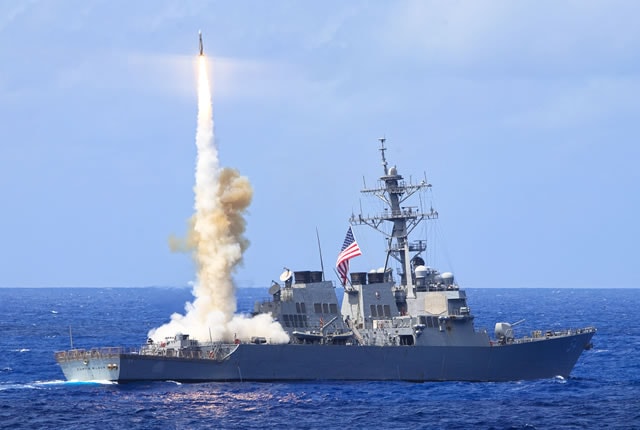The US is trying to catch up with Russia in the field of hypersonic weapons development.
(Baonghean.vn) - US experts are developing both offensive weapons and defense methods to counter hypersonic missiles. Here is Sputnik's document about the Pentagon's plans in this field.
Programmehypersonic weaponsThe US has yet to achieve any significant success. Last weekend, the test of the AGM-183A hypersonic missile failed for the third time in a row, the missile did not leave the wing of the B-52 bomber to carry out the launch.
However, the US is still trying to at least minimize the gap behind Russia in the field of hypersonic weapons. American experts are developing both offensive weapons and defense methods to counter hypersonic missiles. Here is Sputnik's material on the Pentagon's plans in this area.
Hypersonic missiles approach their targets at speeds greater than Mach 5 (more than 5,970 km/h) and are highly maneuverable. They remain invulnerable to any modern missile defense system. Any country that masters these technologies and, most importantly, equips its military with hypersonic weapons will gain a huge advantage over potential adversaries. Russia is the closest to achieving this goal. China has also made some progress in this area, while the United States is trying to catch up with its competitors.
 |
| Arleigh Burke-class guided-missile destroyer. Photo: Reuters |
The US Missile Defense Agency (MDA) has launched a defense project called “Glide Phase Interceptor”. Three defense giants will compete, namely Raytheon, Lockheed Martin and Northrop Grumman. They must come up with a version of the weapon and submit initial concepts by the end of September 2022. The Pentagon will then compare their proposals and select the most optimal version for development and testing. About $ 60 million has been allocated for the first phase of the competition. However, the technical and tactical requirements for the interceptor have not been announced. It will be equipped on ships (namely, on Arleigh Burke-class destroyers) and must be compatible with the Mk41 vertical launch system on ships. That is, the missile will not exceed 7 m in length, and its diameter - 710 mm. Thanks to the Aegis command and control system, warships can independently or upon external target designation, launch interceptor missiles.
The new missile's mission is to intercept hypersonic missile warheads in the glide phase, such as Russia's new Avangard hypersonic weapons system. Unlike traditional intercontinental ballistic missile warheads, whose flight paths in space and along their trajectories are predictable, Avangard has good maneuverability and a complex flight trajectory. At the end of 2018, Russian Deputy Prime Minister Yuri Borisov said that the latest tests showed that Avangard can reach speeds of Mach 27 (more than 32,000 km / h). This insane speed is a weapon in itself. In fact, at this speed, no missile can intercept it. The missile does not even need a nuclear warhead; with its kinetic strike, it can literally smash the target to dust.
It is still unclear how the Pentagon plans to shoot down such "meteorites". Obviously, the new interceptor missiles will also fly at hypersonic speeds, will adjust their course, and the thermobaric warhead will sense the heat from the missile. But first, it is necessary to detect the hypersonic missile in flight. However, after the missile separates from its carrier, detecting it with existing technical means is extremely difficult. The satellites of the US missile attack warning system are in geostationary orbit (very high). Their infrared sensors can detect the target by detecting its light and heat. However, these sensors are powerless against hypersonic cruise missiles (including the Russian Zircon) and hypersonic glide vehicles.
The Pentagon’s Space Development Agency (SDA) recently announced that the US has begun building a new satellite system with infrared sensors to create a “steel shield” against ballistic missiles and hypersonic missiles. Washington hopes that low-orbit satellites will solve the problem. Eight experimental satellites will be launched in 2023. Operating in continuous infrared mode, they will use wide-field sensors to detect signals from cruise missiles and warheads. Each satellite will monitor a certain area of terrain and will immediately alert when detecting a hypersonic target. The Pentagon’s long-term plans include hundreds of satellites with infrared sensors to create a “steel shield” that, in theory, will allow tracking of each hypersonic missile launch.
Russia has also made similar developments. Recently, a source in the Russian defense industry said that later this year in the Arctic, they will test an air defense system capable of intercepting hypersonic targets at a distance of hundreds of kilometers. However, so far, related details are still kept strictly secret./.








